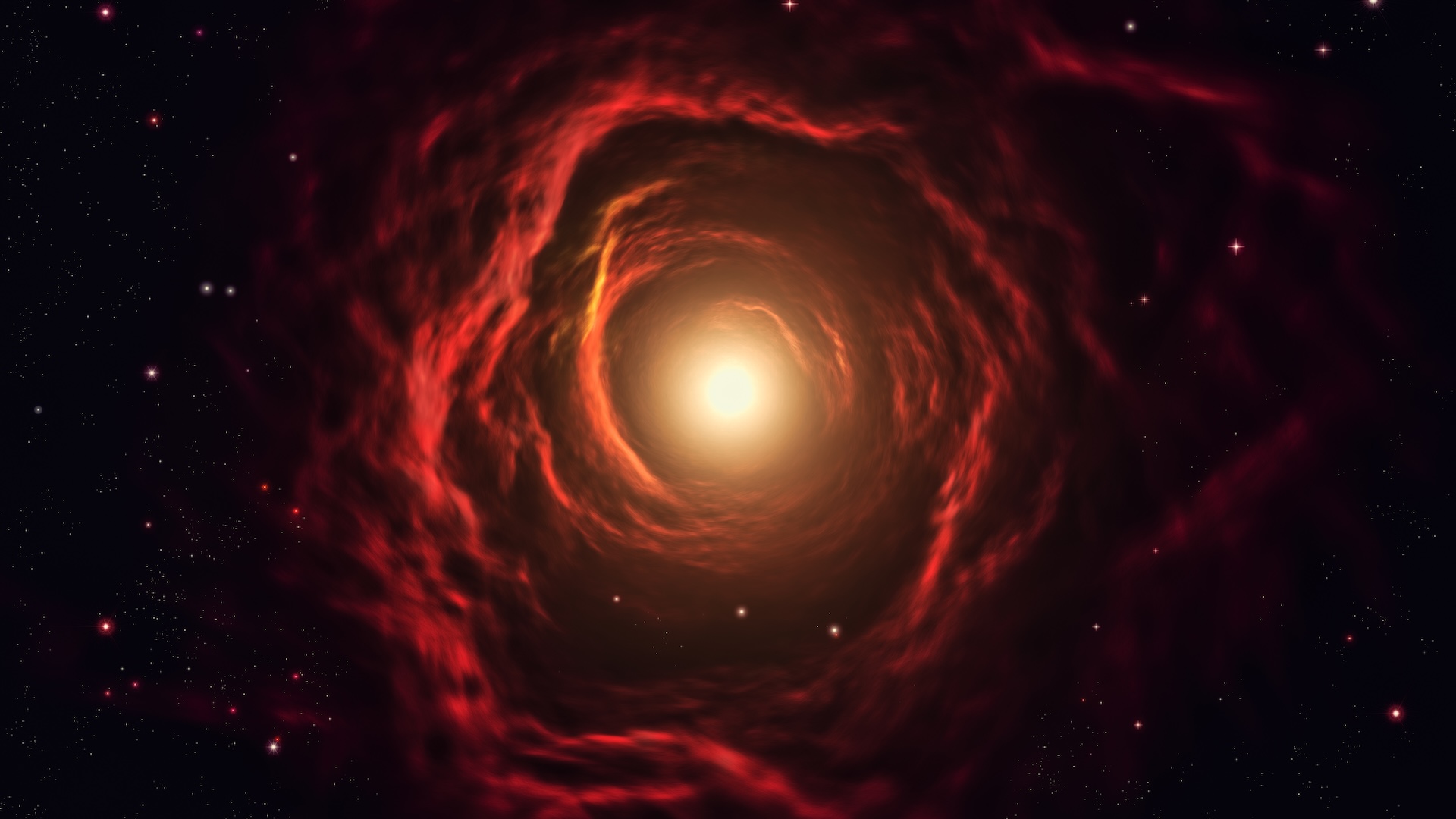Huge cosmological mystery could be solved by wormholes, new study argues
The universe is expanding at an ever accelerating rate — and tiny wormholes that bore through the fabric of space-time might be to blame, a new study proposes.

Microscopic wormholes may be driving the accelerated expansion of the universe, scientists say. These tiny wormholes are constantly being born from the vacuum of space due to subtle quantum effects.
If confirmed through experiments and observations, the wormholes could become a valuable source of information on quantum gravity — a theoretical unification of the fundamental forces of the universe, often considered to be the Holy Grail of theoretical physics.
Numerous astronomical observations show that our universe is expanding at an ever-increasing rate. However, Einstein's general theory of relativity states that if the universe contains only the species of particles and radiation we know, such behavior of the fabric of space is impossible.
To reconcile the observations of universe expansion with this theory, scientists have proposed that space is filled with an enigmatic entity that can't be detected in ground or space-based experiments.
This mysterious substance, called dark energy, interacts very weakly with other types of matter and fields, so, there is currently no reliable information about its structure or origin.
In a recent study published April 5 in the journal Physical Review D, researchers proposed a bold new candidate for dark energy: subatomic-size wormholes — or tiny tunnels connecting disparate points in space.
Related: Wormholes might bend light like black holes do — and that could be the key to finding them
Get the world’s most fascinating discoveries delivered straight to your inbox.
According to the authors, these wormholes are constantly being born and destroyed in the vacuum of space due to quantum effects. This is similar to how particles are produced near the event horizons of black holes, leading to Hawking radiation; or how electron-positron pairs are generated by a strong electric field — a phenomenon known as the Schwinger effect.
However, the creation of these wormholes is somewhat different from those other phenomena because their mathematical description requires quantum effects in gravity to be accounted for — a task that's much more complicated and poorly understood.
These difficulties in calculating quantum gravitational phenomena prevented the authors from accurately deriving the wormhole birth rate. However, using an approach known as Euclidean quantum gravity, they showed that if about 10 billion wormholes are spontaneously created per cubic centimeter per second, the energy they generate would be sufficient to explain the currently observed rate of the universe's expansion.
"Although our result was derived on the grounds of Euclidean quantum gravity… it is likely that our modification may hold for other quantum gravity theories as well," study co-author Stylianos Tsilioukas, a doctoral student at the University of Thessaly and National Observatory of Athens, told Live Science via email.
Moreover, the team's analysis showed that their model of dark energy is even better observationally than the most widely accepted theory, known as the Standard Cosmological Model, which posits that dark energy has a time-independent energy density.
"According to our proposal dark energy can change as time flows," Tsilioukas said. "This is a major advantage because recent observations suggest that the rate of expansion of the universe is different in recent times than it was in the early universe."
However, no matter how successful the researchers' model is at explaining the general properties of dark energy, the validity of any physical theory must be tested with experimental data. And for now, the theory remains untestable.
In the future, the ever-increasing accuracy of space experiments and observations should enable astronomers to deduce the universe expansion rate in more detail, as well as to measure other observable manifestations of dark energy. This could enable researchers to test whether this newly proposed model of dark energy is correct.
In the meantime, the authors plan to further improve their theoretical analysis. "We are working right now on a model which calculates the rate of wormhole formation. " Tsilioukas said. "The research seems promising and we hope to publish the results very soon."

Andrey got his B.Sc. and M.Sc. degrees in elementary particle physics from Novosibirsk State University in Russia, and a Ph.D. in string theory from the Weizmann Institute of Science in Israel. He works as a science writer, specializing in physics, space, and technology. His articles have been published in AdvancedScienceNews, PhysicsWorld, Science, and other outlets.
